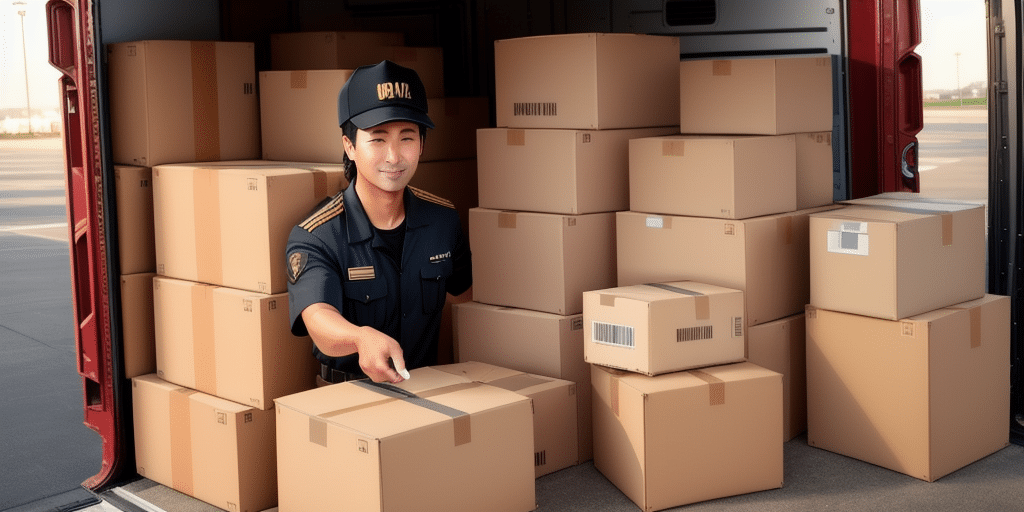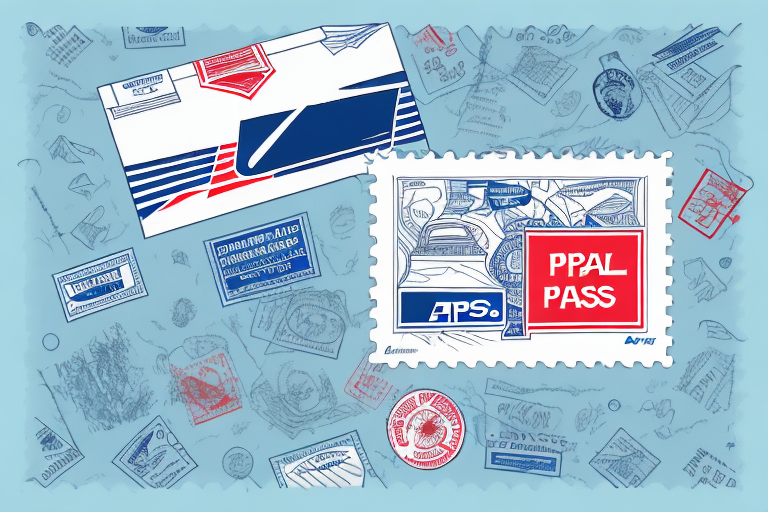Are you interested in understanding how FedEx calculates its shipping rates based on weight or size? If so, you're in the right place! In this article, we will take a comprehensive look at all the factors that affect FedEx shipping rates. By the end, you'll have a clear understanding of how to calculate your shipping costs and choose the right packaging for your shipment to save money.
How FedEx Determines Shipping Rates
FedEx offers various shipping services with different rates depending on the shipment's weight, size, and destination. Weight-based shipping rates are charged by the pound, whereas size-based shipping rates are determined by the dimensional weight of the package. The dimensional weight reflects the shipment's volume in relation to its weight and is calculated by multiplying the package's length, width, and height. FedEx will charge you either the package's actual weight or dimensional weight, whichever is greater.
In addition to weight, size, and destination, FedEx also considers the type of shipment when determining shipping rates. For example, hazardous materials require special handling and may incur additional fees. Similarly, perishable items may require expedited shipping to ensure they arrive fresh, which can also increase the shipping cost.
Another factor that can affect shipping rates is the level of service selected. FedEx offers a range of delivery options, from standard ground shipping to overnight express delivery. Faster delivery options typically come with higher shipping rates, so it's important to consider the urgency of your shipment when selecting a service level.
The Difference Between Weight-Based and Size-Based Shipping Rates
The difference between weight-based and size-based shipping rates lies in the way they are calculated. Weight-based rates are based solely on actual weight, while size-based rates are determined by measuring the package's volume and its density. This means that if you ship a lightweight package with a large volume, you may be charged more for shipping because of the package's size-based rate.
It is important to note that some shipping carriers may use a combination of weight-based and size-based rates to determine the final shipping cost. In these cases, the carrier will compare the actual weight and the dimensional weight of the package, and charge whichever rate is higher. To avoid unexpected shipping costs, it is recommended to measure both the weight and dimensions of your package accurately before shipping.
How to Calculate Shipping Costs with FedEx
To calculate the cost of shipping with FedEx, you need to take into account the shipment's weight, size, and destination. The easiest way to do this is by using FedEx's online shipping calculator. You simply input your package's weight, dimensions, and destination, and the calculator will provide you with a shipping cost estimate. Alternatively, you can use FedEx's rate sheets to calculate your shipping costs manually.
It's important to note that FedEx offers different shipping options, such as overnight, 2-day, and ground shipping. The cost of shipping will vary depending on the speed of delivery you choose. Additionally, FedEx offers discounts for businesses that ship frequently or in large volumes. These discounts can significantly reduce your shipping costs, so it's worth looking into if you're a business owner.
Another factor to consider when calculating shipping costs with FedEx is the type of item you're shipping. Some items, such as hazardous materials or perishable goods, may require special handling or packaging, which can increase the cost of shipping. It's important to check FedEx's guidelines for shipping these types of items to ensure that you're following all necessary regulations and avoiding any additional fees.
Factors that Affect FedEx Shipping Rates
Several factors can affect FedEx shipping rates, including package weight, dimensions, and destination, as well as delivery speed and shipping distance. Additionally, the type of service you require, such as standard or express shipping, also affects the shipping cost.
Another factor that can affect FedEx shipping rates is the value of the package being shipped. If you are shipping high-value items, you may need to purchase additional insurance to protect your package during transit. This can add to the overall cost of shipping. It's important to consider all of these factors when choosing a shipping option that meets your needs and budget.
Tips for Reducing Shipping Costs with FedEx
To reduce your shipping costs with FedEx, you can take advantage of discounts offered for certain shipping volumes, use lightweight packaging materials, and choose a slower shipping speed. You can also avoid oversize or overweight packages and look for alternative shipping providers that offer lower rates for specific shipment types.
Another way to reduce your shipping costs with FedEx is to use their online shipping tools, such as FedEx Ship Manager. This tool allows you to compare shipping rates, schedule pickups, and track your shipments all in one place. Additionally, you can consider consolidating multiple shipments into one package to save on shipping costs. By following these tips, you can effectively reduce your shipping costs and save money on your business expenses.
Comparing FedEx Shipping Rates to Other Carriers
Before choosing to ship with FedEx, it's essential to compare their shipping rates to other carriers. This will ensure that you're choosing the most cost-effective option for your needs. Some of the major competitors to FedEx include UPS, DHL, and the United States Postal Service.
When comparing shipping rates, it's important to consider the type of shipment you're sending. For example, if you're shipping internationally, some carriers may have better rates or more experience with customs regulations. Additionally, some carriers may offer discounts for certain types of shipments or for high volume shippers.
Another factor to consider is the speed of delivery. While FedEx is known for their fast delivery times, other carriers may offer more affordable options for slower delivery. It's important to weigh the cost savings against the urgency of your shipment to determine the best option for your needs.
Understanding the Importance of Packaging for FedEx Shipping Rates
The packaging you choose can significantly impact your FedEx shipping rates. FedEx uses several factors to determine shipping costs, including the package's weight and size. Lighter packages, as well as those that are smaller in volume, usually cost less to ship. Choosing the right box size, using cushioning materials to protect the package, and preventing damage to the enclosed goods during transit can all affect the shipping cost.
Another important factor to consider when choosing packaging for FedEx shipping is the type of product being shipped. Fragile or delicate items may require additional cushioning or specialized packaging to ensure they arrive at their destination undamaged. Additionally, hazardous materials require specific packaging and labeling to comply with safety regulations and may incur additional fees.
It's also important to note that the packaging itself can affect the overall cost of shipping. FedEx offers discounts for customers who use their own packaging, such as boxes or envelopes with the FedEx logo. However, if you choose to use your own packaging, it must meet certain requirements for size, weight, and durability to ensure safe transport.
How to Choose the Right Packaging for Your Shipment
Choosing the right packaging for your shipment is essential to help you save on shipping costs. Consider selecting a smaller box size and using lightweight materials to cushion the package. Also, consider the shape and strength of the package and ensure that it can withstand the rigors of shipping without getting damaged.
Another important factor to consider when choosing packaging for your shipment is the type of product you are shipping. Fragile items, such as glassware or electronics, require extra protection and may need to be packed in specialized materials like bubble wrap or foam. On the other hand, non-fragile items like clothing or books may not require as much cushioning and can be shipped in a standard box. It's important to assess the needs of your specific product and choose packaging accordingly to ensure it arrives at its destination safely.
Understanding the Impact of Dimensional Weight on Your Shipment's Cost
Dimensional weight, calculated based on the package's volume rather than the actual weight, can significantly impact your shipping costs. If you're shipping a lightweight but large package, your shipping cost may increase because the dimensional weight will be higher than the actual weight.
It's important to note that different shipping carriers may have different dimensional weight calculations, so it's important to check with your carrier to understand their specific policies. Additionally, there are ways to reduce the impact of dimensional weight on your shipping costs, such as using smaller packaging or consolidating multiple items into one package.
Another factor to consider is the destination of your shipment. Some countries have restrictions on the size of packages that can be shipped, which can further increase shipping costs. It's important to research the shipping regulations of your destination country before sending your package to avoid any unexpected fees or delays.
Common Mistakes to Avoid When Estimating Your FedEx Shipping Costs
When estimating your shipping costs with FedEx, it's essential to avoid some common mistakes. These may include not considering the package's actual weight, not paying attention to the dimensional weight, and not taking advantage of discounts offered for specific volume levels. Always double-check your shipping costs to avoid any unexpected expenses.
Another common mistake to avoid when estimating your FedEx shipping costs is not selecting the appropriate shipping service. FedEx offers a range of shipping services, including overnight, 2-day, and ground shipping. Choosing the wrong service can result in higher costs and longer delivery times. Make sure to select the service that best fits your needs and budget.
It's also important to properly package your items to avoid any damage during transit. Improper packaging can result in additional fees and delays. Use sturdy boxes and packing materials, and make sure to properly label your packages with the correct shipping information. Taking the time to package your items correctly can save you money and ensure your items arrive safely.
Understanding Surcharge Fees in FedEx Shipping Rates
FedEx may charge surcharge fees for certain shipment types, such as oversized or overweight packages, remote locations, and expedited delivery services. You should check these fees in advance to avoid any unpleasant surprises when shipping your package.
The Benefits of Negotiating Better Shipping Rates with FedEx
If you're a frequent shipper with FedEx, you may qualify for special discounts or rates. By negotiating with FedEx, you may be able to enjoy lower shipping rates or benefit from preferential treatment for your shipments. Regularly monitoring your shipping costs and negotiating with FedEx can help you save money over the long term.
How to Save Money on Large and Heavy Items with Special FedEx Services
Large, bulky, and heavy items can be costly to ship. However, you can save money by using special FedEx services that cater to these types of shipments. For instance, FedEx Freight offers a range of services for large and heavy items.
In conclusion, understanding how FedEx determines its shipping rates based on weight or size can help you save money and make informed decisions about your shipments. By following the tips provided in this article, you can choose the best packaging, estimate your shipping costs accurately, and negotiate better rates with FedEx.









